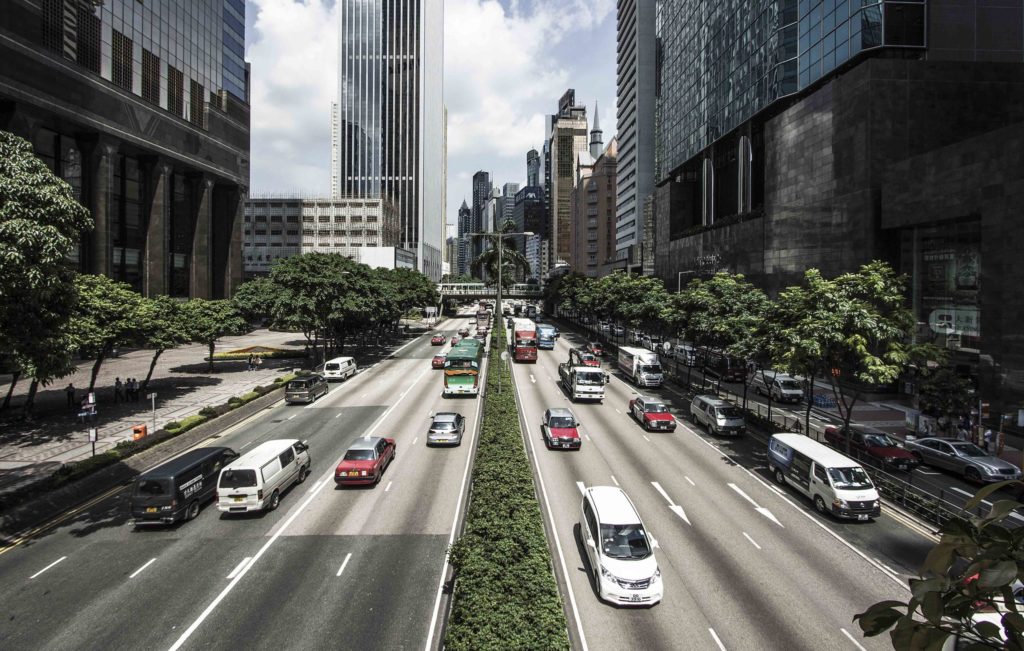Thinking of taking your Composition Skills to the next level and really creating some stunning images of your own by learning the skills of a composition master? This Guide “Advanced Composition” by expert photographer Kent DuFault explains “How to Get Beyond the ‘Rule of Thirds' And Produce Truly Outstanding Images With Advanced Composition…” and that's the key.
There are many reasons that we are told to avoid converging parallels in photography. Indeed, there are even expensive, perspective control lenses that enable us to avoid them. A quick Google of the words Converging Parallels and Photography throws up countless articles on why you should avoid them.
However, like many things in photography, there are two sides to the coin and converging parallels can be used to create some striking images with great depth.
Whilst there are some situations in which we should try to avoid them, there are also plenty of reasons why we should embrace them. Perhaps we should mention the other name, “vanishing point”. So let’s take a look at how we can use converging parallels in our photography.
Uses for Converging Parallels
One obvious use stands out from the rest and that is as leading lines. Converging parallels naturally draw your eye into and through the image. By positioning our subject on one or both of the lines we immediately draw attention to our subject.
Another great use is to give our images a sense of depth. Be it rail tracks, a road or even the shadows of a tall building, those lines give us a three-dimensional feeling to a two-dimensional shot.

Multiple converging lines give this image great depth. By Allen Lai
Abstract imagery is another great use of converging parallels. In architecture for example rather than moving back to capture a tall building and removing the converging lines, we can move in very close and point the camera directly upwards and create an abstract shot of the building.

This escalator's line give an abstract feel to the converging parallels. By Gregory Culley
Because of their natural symmetry, converging parallels work beautifully with the rule of thirds. By positioning subjects at points where the lines intersect with the third, we can create very powerful images.
Learn how to go beyond these rules, break them and create your own masterpieces with this guide “Advanced Composition” by expert photographer Kent DuFault.
How to shoot
One of the very best tools for shooting parallels is a wide angle lens. The perspective afforded by the wide field of view gives us the perception of great distance between the foreground and the horizon and hence gives a feeling of depth to the image.
Another advantage of wide lenses is their inherent deep depth of field. By stopping down to a small aperture we can keep the image in focus from very close to the lens all the way out to the horizon.
One of the more challenging aspects of shooting converging parallels is where to place the vanishing point. Fortunately the rule of thirds steps in to help us here.
- One way is to place the converging point and hence the horizon on either the lower or upper third of the frame and keep the vanishing point dead centre.
- Another is to place the point on either of the vertical thirds, drawing the viewer’s eye to the left or right. Finally, we can place the point on the intersection of the thirds. When shooting a subject within converging parallels, position that subject on one of the intersections.
Viewpoint is also an important part of the composition when shooting parallels. If you get down low to the ground then you can exaggerate the perspective and sense of depth, if you shoot from a higher level you can foreshorten the foreground and give the feeling of space above the horizon.
Light and shade are great attributes in creating parallel that work well. It might be the shadows of ridges of wet sand on a beach or a series of neon light heading off into the distance. Shadows can be used to good effect, a converging parallel does not necessarily have to be a physical thing.
Converging parallels do not have to be the centrepiece of a composition. In some cases, they can become part of the background framing.
For example, we might shoot an autumn leaf on a straight garden path. Rather than using a deep depth of field we would shoot wide open. The result would be the lines of the path converging into an out of focus background and creating a natural frame for our leaf.
Despite the many articles telling us how to avoid the “curse” of converging parallels, the fact is that they are a powerful compositional tool and can be used in many ways to create images that create depth and impact.
Next time you're out shooting, take a look around you and see just how many parallels can be used for great shots.
This Guide “Advanced Composition” by expert photographer Kent DuFault will teach you how to go beyond the rule of thirds and create stunning images from subjects or situations you never thought possible…





1 Comment
I’ve always enjoyed shooting converging lines. Think they are a strong compositional tool for telling a story. And a lot easier to photograph than trying to use a perspective control lens or viewfinder camera to correct them.